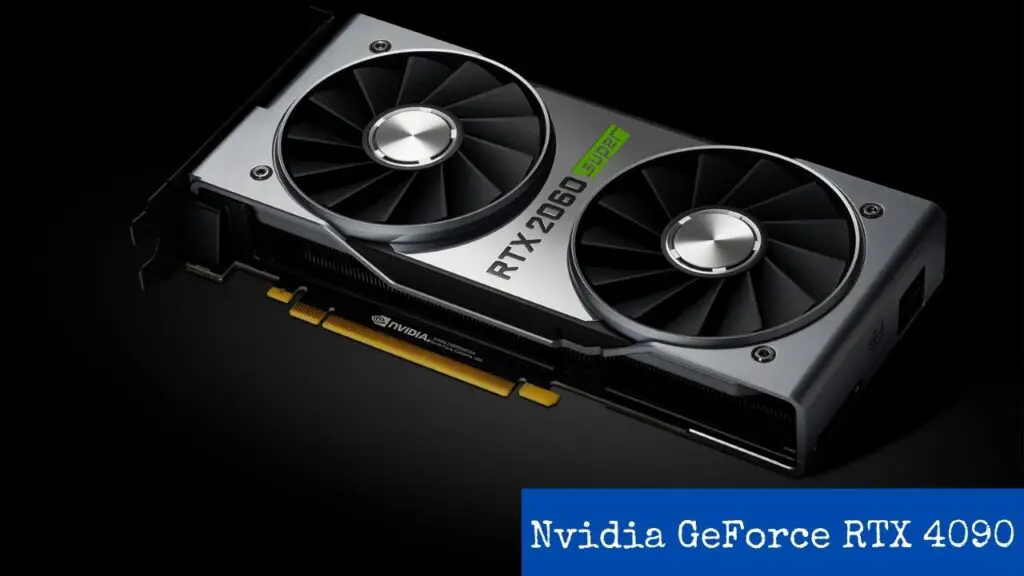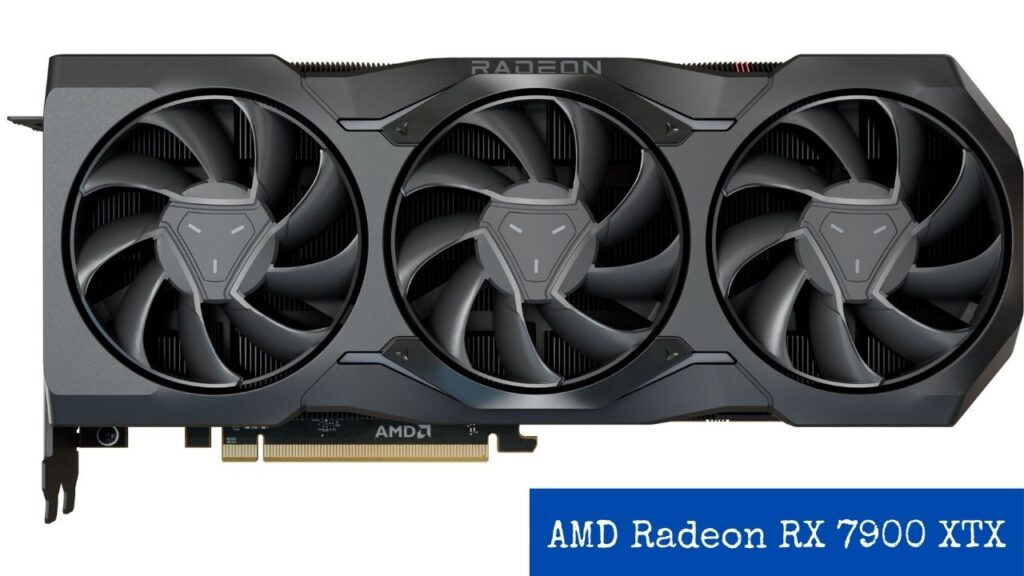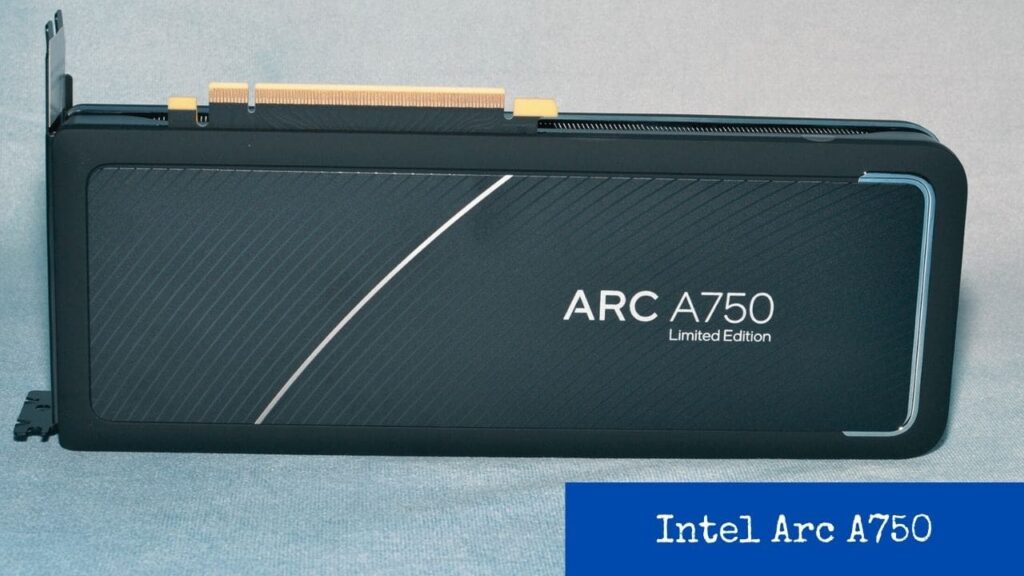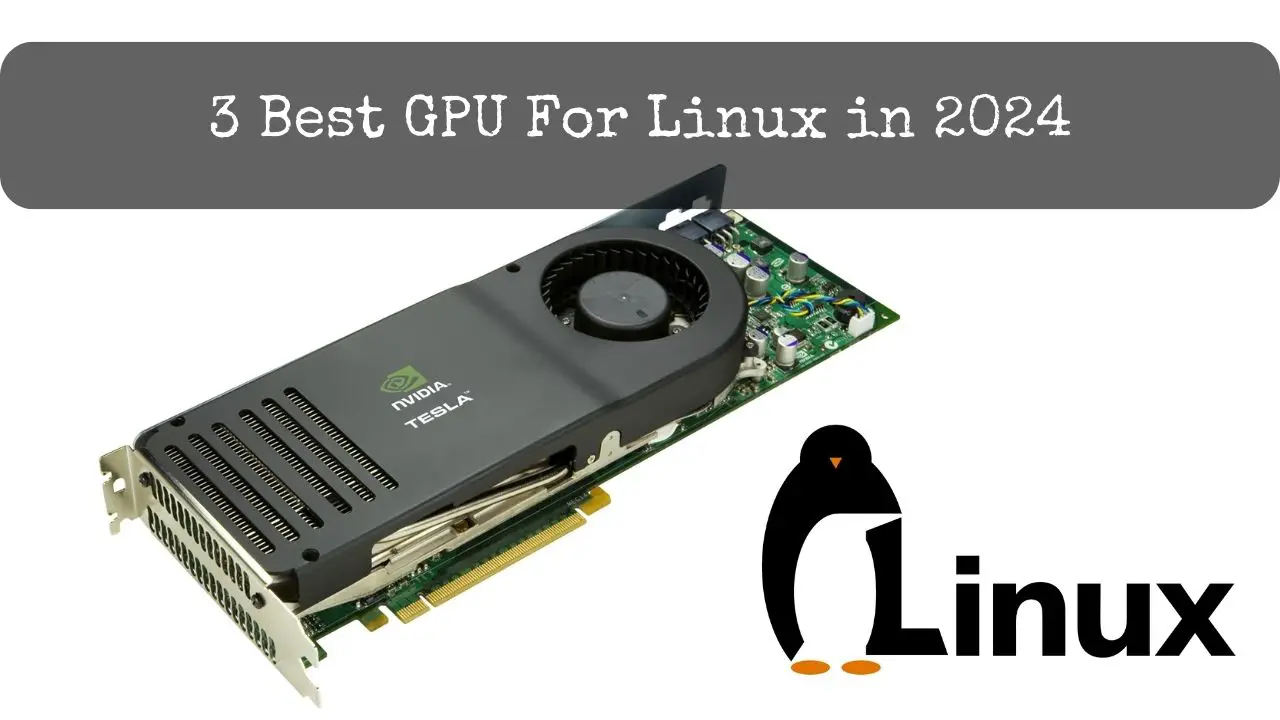GPUs, or Graphics Processing Units, are the heart of any computer system, especially those running Linux. They handle all the visual tasks, from displaying images on your screen to rendering complex 3D models.
In 2024, three GPUs have risen to the top, offering unmatched performance and compatibility with Linux. These GPUs are not just about speed; they also bring advanced features like real-time ray tracing and AI-driven image processing.
Whether you’re a gamer, a video editor, or a data scientist, these GPUs are designed to push the boundaries of what’s possible on a Linux machine. Get ready to explore the next generation of GPU for Linux that are set to revolutionize the way you work and play on Linux.
Best GPU For Linux
- Nvidia GeForce RTX 4090
- AMD Radeon RX 7900 XTX
- Intel Arc A750
Nvidia GeForce RTX 4090
The Nvidia GeForce RTX 4090 is a powerhouse of a graphics processing unit (GPU) that has been designed to push the boundaries of what’s possible in terms of visual fidelity and computational power. It’s the flagship model in Nvidia’s lineup, aimed at gamers and professionals who demand the highest quality graphics and performance.

This GPU is built on Nvidia’s latest Ampere architecture, which introduces significant improvements over previous generations. The Ampere architecture allows for higher clock speeds, more cores, and better memory bandwidth, all of which contribute to the RTX 4090’s exceptional performance.
One of the standout features of the RTX 4090 is its support for real-time ray tracing, a technique that simulates the physical behavior of light to create highly realistic lighting and reflections. This technology is used extensively in games and applications to enhance the visual experience, making objects look more lifelike and immersive.
Another key aspect of the RTX 4090 is its massive amount of VRAM, which is crucial for handling large textures and storing data for rendering. With a substantial amount of memory, the RTX 4090 can handle complex scenes and high-resolution textures without compromising performance.
The GPU also includes advanced cooling solutions to ensure it operates efficiently under heavy loads. Nvidia has incorporated cutting-edge thermal design powered by custom liquid cooling systems, which help maintain optimal temperatures even during intense gaming sessions or professional workloads.
In summary, the Nvidia GeForce RTX 4090 is a testament to Nvidia’s commitment to innovation in the realm of graphics processing. It’s a GPU that sets the bar high for future releases, offering unparalleled performance and visual quality that will likely be the envy of many for years to come. Whether you’re a hardcore gamer looking for the ultimate gaming experience or a professional needing the best tools for their work, the RTX 4090 is a GPU worth considering.
AMD Radeon RX 7900 XTX
The AMD Radeon RX 7900 XTX is a GPU that showcases AMD’s commitment to innovation and performance. It’s built on the company’s cutting-edge RDNA 3 architecture, which is renowned for its advanced design and efficient power usage. This architecture is a testament to AMD’s ability to push the boundaries of what’s possible in graphics processing, making the RX 7900 XTX a formidable contender in the market.

One of the standout features of the RX 7900 XTX is its impressive resolution handling. With support for resolutions up to 8K, this GPU is poised to be the backbone of future display technologies. For Linux users who are eager to embrace the next generation of visuals, the RX 7900 XTX is the perfect companion, ensuring that their systems can handle the highest settings without any compromise on performance.
Another aspect that sets the RX 7900 XTX apart is its eco-friendly operation. AMD has focused on power efficiency throughout the design process, which results in lower operating costs and a reduced carbon footprint. This is particularly appealing to Linux users who are conscious about their environmental impact and energy consumption.
When it comes to multitasking, the RX 7900 XTX is a true workhorse. It’s designed to handle multiple applications and processes simultaneously, ensuring that no matter how many windows you have open or how many tabs you’re browsing, the GPU will perform without skipping a beat. This is a major plus for Linux users who lead busy digital lives, constantly switching between different tasks.
For those who enjoy customizing their systems, the RX 7900 XTX offers a wealth of opportunities for overclocking. By pushing the GPU beyond its factory settings, Linux users can unlock additional performance, whether they’re trying to squeeze out every last bit of speed for gaming or simply enjoying the thrill of optimization.
Lastly, the RX 7900 XTX is designed with scalability in mind. It’s capable of adjusting its performance levels based on the workload, ensuring that it remains consistently powerful whether you’re running a demanding game, working on a complex project, or multitasking with several applications open. This feature is particularly valuable for Linux users who switch between different types of work regularly.
In conclusion, the AMD Radeon RX 7900 XTX is a GPU that offers a comprehensive package of performance, future-readiness, and sustainability. It’s a top choice for Linux users who are looking for a GPU that can handle the demands of today’s applications and prepare them for tomorrow’s advancements in display technology.
Intel Arc A750
The Intel Arc A750 is a GPU that represents a significant step forward in Intel’s venture into the graphics card market. It’s designed to offer a balance of performance and efficiency, making it an intriguing option for Linux users who are looking for a GPU that doesn’t just meet the minimum requirements but also delivers a superior experience.

At the heart of the Arc A750 is Intel’s latest Gen 12 architecture, which is built on a 12-nanometer process. This advanced technology allows for increased transistor density, leading to improved performance and power efficiency. The Gen 12 architecture is a leap forward from previous generations, promising faster rendering times and smoother gameplay for Linux users.
One of the key selling points of the Arc A750 is its focus on integrated graphics. This means that it shares resources with the CPU, which can lead to significant power savings and reduced heat output. For Linux users who are concerned about energy consumption and thermal management, the Arc A750’s integrated approach is a breath of fresh air.
The GPU also supports DirectX 12 Ultimate and Vulkan API, which are essential for modern gaming and graphics applications. These APIs enable developers to create visually stunning games and applications that take full advantage of the GPU’s capabilities. For Linux users who enjoy the latest titles and software, the Arc A750’s support for these APIs ensures that they can play and work with the best of the best.
Another notable feature of the Arc A750 is its support for dynamic refresh rate technology. This feature allows the GPU to adjust the screen’s refresh rate dynamically based on the content being displayed, which can lead to smoother visuals and less power consumption. For Linux users who value visual quality and energy efficiency, this feature is a game-changer.
Furthermore, the Arc A750 is equipped with a robust cooling solution that helps maintain optimal temperatures even under heavy load. This is particularly important for Linux users who run demanding applications or games for extended periods, as it ensures that the GPU remains stable and reliable.
In summary, the Intel Arc A750 is a GPU that offers a blend of performance, efficiency, and cutting-edge technology. It’s a GPU that’s not just about meeting the minimum requirements but about providing a superior experience for Linux users. Whether you’re a gamer looking for the latest visuals or a professional needing a reliable and efficient GPU for your work, the Arc A750 is a strong contender to consider.
Also Read: 13 Sentinels Aegis Rim Gameplay, Walkthrough and Guide
Frequently Asked Question
1: How does the Nvidia GeForce RTX 4090 perform on Linux compared to Windows?
The RTX 4090’s performance on Linux is typically comparable to its performance on Windows, thanks to Nvidia’s strong support for Linux drivers and the GPU’s inherent capabilities.
2: Is the AMD Radeon RX 7900 XTX compatible with Linux distributions that don’t natively support AMD GPUs?
While AMD GPUs are generally well-supported in the Linux community, some distributions may require additional drivers or manual configuration to fully utilize the RX 7900 XTX’s features.
3: Can the Intel Arc A750 be overclocked on Linux, and if so, what are the potential benefits?
Overclocking the Intel Arc A750 on Linux is possible, though it may require specific tools and a deep understanding of the hardware. Overclocking can lead to increased performance, but it also carries risks such as instability and potential damage to the GPU.
Conclusion
As we close this chapter on the GPU landscape for Linux in 2024, it’s evident that the Nvidia GeForce RTX 4090, AMD Radeon RX 7900 XTX, and Intel Arc A750 are not just GPUs—they are the future of visual computing for Linux users. Each of these GPUs brings a unique set of advantages, from the unrivaled performance of the RTX 4090 to the eco-conscious design of the RX 7900 XTX, and the balanced performance of the Arc A750.
Whether you’re navigating the virtual world of gaming or the realms of professional work, these GPUs are the keys to unlocking the full potential of your Linux machine. So, buckle up and get ready to experience the next wave of Linux graphics, where every frame counts.



